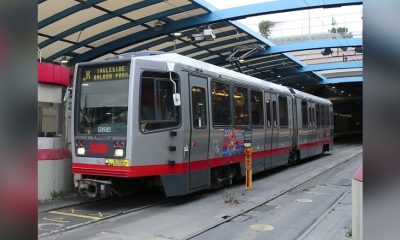San Francisco
AAA advices public to be cautious on deadliest day for pedestrians
AAA advises parents to be particularly cautious of the risks that children may encounter when trick-or-treating on Halloween.
Children are four times more likely to be hit by a car on Halloween than on any other day of the year, according to the National Highway Traffic Safety Administration (NHTSA).
Children are always at greater risk as pedestrians because of their shorter stature and unreliable judgment about when and where to cross streets. According to the Centers for Disease Control and Prevention, the number of deaths among young pedestrians from 5 to 14 years of age is four times higher on Halloween, between 4 p.m. and 10 p.m.
“Combine children walking after dark, candy, vision-compromising costumes, and adult partygoers on the road and you have a recipe for disaster,” said AAA Northern California spokesperson Cynthia Harris. “Children are safer the more visible they are. There are many easy and inexpensive ways for parents to make sure that Halloween costumes are easy for drivers to see at a distance and easy for children to see out of.”
Halloween Safety Tips for Motorists
- Slow down in residential neighborhoods and obey all traffic signs and signals. Drive at least 5 mph below the posted speed limit to give yourself extra time to react to children who may dart into the street.
- Watch for children walking on roadways, medians and curbs. In dark costumes, they’ll be harder to see at night.
- Look for children crossing the street. They may not be paying attention to traffic and cross the street mid-block or between parked cars.
- Carefully enter and exit driveways and alleys.
- Turn on your headlights to make yourself more visible – even in the daylight.
- Broaden your scanning by looking for children left and right into yards and front porches.
Halloween Safety Tips for Parents
- Ensure an adult or older, responsible youth is available to supervise children under age 12.
- Plan and discuss the route your trick-or-treaters will follow.
- Instruct children to travel only in familiar areas and along established routes.
- Teach children to stop only at well-lit houses and to never to enter a stranger’s home or garage.
- Establish a time for children to return home.
- Tell children not to eat any treats until they get home.
- Review pedestrian and traffic safety rules.
Halloween Safety Tips for Trick-or-Treaters
- Be bright at night – wear retro-reflective tape on costumes and treat buckets to improve visibility to motorists and others.
- Wear disguises that don’t obstruct vision and avoid facemasks. Instead, use nontoxic face paint. Also, watch the length of billowy costumes to help avoid tripping.
- Ensure any props are flexible and blunt-tipped to avoid injury from tripping.
- Carry a flashlight containing fresh batteries, and place it face down in the treat bucket to free up one hand. Never shine it into the eyes of oncoming drivers.
- Stay on sidewalks and avoid walking in streets if possible.
- If there are no sidewalks, walk on the left side of the road, facing traffic.
- Look both ways and listen for traffic before crossing the street.
- Cross streets only at the corner, and never cross between parked vehicles or mid-block. Trick-or-treat in a group if someone older cannot go with you.


























